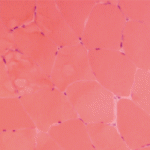Any plasma product has a potential for transmission of infection. In the 1990s, cases of acute hepatitis C were reported in patients receiving IVIg. A number of steps were then taken to reduce the risk of transmitting blood-borne pathogens, including more careful donor screening and selection, better testing of plasma donations and more effective procedures for virus inactivation. There have since been no subsequent reports of hepatitis C virus infection. Nor have there been reports of transmission of HIV, and the cold alcohol fractionation process is an effective method for the removal and inactivation of virus. Similarly, transmission risk of human prion disease has not been reported with the use of IVIg.3 Vigilance is required, however, and all patients receiving IVIg should be counseled and monitored for transmission of infections.
Clinical Applications and Indications
IVIg was first proven to be an effective immunomodulator over three decades ago, when Paul Imbach at University Children’s Hospital Basel in Switzerland reported successful treatment of acute and chronic idiopathic thrombocytopenic purpura (ITP) with this agent. In these pioneering experiments, Imbach treated 13 patients with 2 gm/kg of IVIg divided over five consecutive days, and observed a dramatic and rapid rise in platelet counts in all patients.5 At present, IVIg is FDA approved for six indications other than ITP: primary immunodeficiency disorders (PID), secondary immunodeficiency in chronic lymphocytic leukemia (CLL), pediatric HIV infection, Kawasaki disease (KD), chronic inflammatory demyelinating polyneuropathy (CIDP), and prevention of graft-versus-host disease and infection following adult hematopoietic cell transplantation.3,6 None of the licensed products in the U.S. has approval for all indications (see Table 1). Current estimates suggest that more than 100 different conditions have been treated with IVIg.6 While the number of clinical conditions where IVIg is used continues to increase, the mechanisms of the antiinflammatory effects of high-dose IVIg remain poorly understood, limiting development of a more scientific rationale for its use and biomarkers to assess its action and guide patient selection.
Potential Mechanisms of Action
Many modes of action have been proposed for IVIg, and different mechanisms may be responsible for its antiinflammatory activity in different diseases (see Figure 1). Imbach’s initial observations led to subsequent studies to elucidate IVIg’s therapeutic efficacy in ITP, and one of the earliest hypothesized mechanisms was the functional blockade of IgG receptors (FcγR) on phagocytes. Specifically, IVIg competition for, and occupation of, FcγRs was postulated to prevent uptake and clearance of antibody-coated platelets by the reticuloendothelial system. This theory was supported by studies on the clearance of autologous radiolabeled, antibody-sensitized erythrocytes in four adults with ITP treated with high-dose IVIg. In these experiments, IVIg not only prolonged the clearance time of the radiolabeled erythrocytes, but also transiently increased the platelet counts to normal levels within four to five days.7


